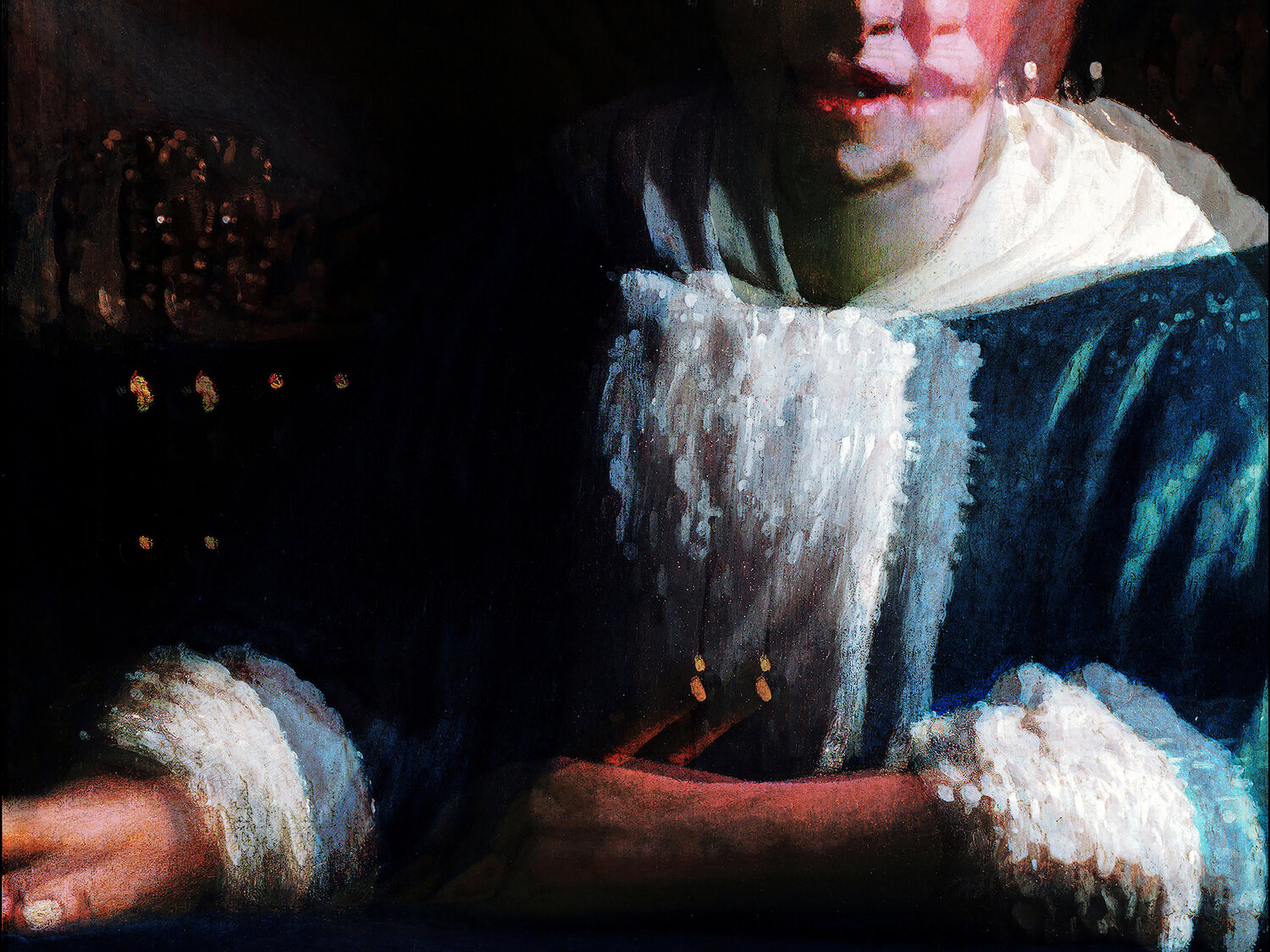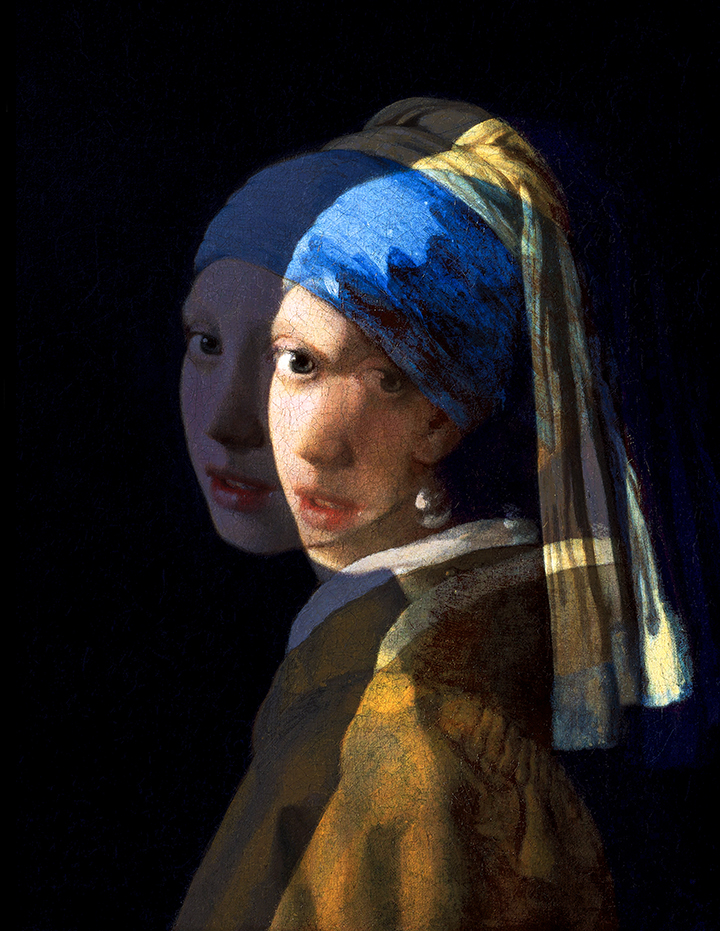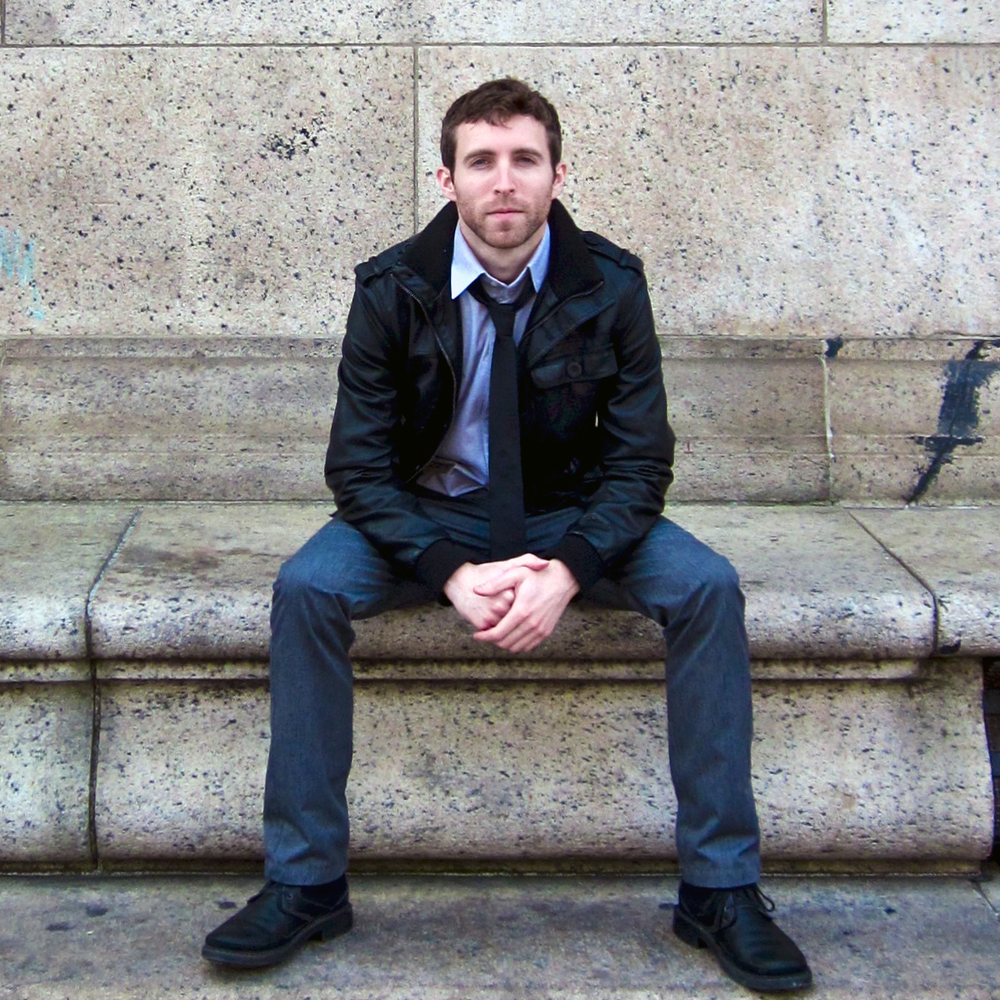Contemplating a Vermeer or a Rainstorm, Will Dowd Sees Things Differently
-
-
Slice of MIT
Filed Under
Recommended


Step into MIT’s Rotch Library of Architecture and Planning through the end of November and you’ll be greeted by 16 pieces of art at once familiar and disorienting. The exhibit, Vermeer Through a New Lens, showcases a series of digitally created images based on the paintings of Dutch master Johannes Vermeer. But the central subject of each image—a woman in a blue dress, a young girl playing Baroque guitar, an astronomer gazing at a globe—is duplicated or triplicated, the copies partly superimposed and mostly misaligned, as if you can’t quite bring your eyes into focus.
And that’s the point. This exhibit “allows viewers to see these iconic works through my eyes,” explains Will Dowd SM ’07, the artist. And those eyes of his are unusual. Dowd has a visual impairment classified as a binocular vision disorder, which means his brain has a hard time converging the two visual streams from his eyes into a single, coordinated image. In Vermeer Through a New Lens, he’s replicated the way his mind multiplies the world.
Dowd earned his master’s degree at MIT in science writing, and the written word remains his primary mode of expression, with occasional forays into visual art. This latest exhibit was inspired by a contemporary controversy in the art history world over whether Dutch Golden Age artists such as Vermeer and Rembrandt were able to paint such realistic portraits and still lifes using nothing but “their God-given talents”—as Dowd puts it—or whether they relied on lenses and camera obscuras. Dowd felt these debates neglected the final set of lenses in a painting’s life: the viewer’s eyes. “It’s this final transformation,” says Dowd, “which happens once the image races down the viewer’s optic nerve and splashes across their cortex, that has been overlooked.” Dowd’s exhibit confronts the imprecision of our own perspectives head-on.
It’s this final transformation, which happens once the image races down the viewer’s optic nerve and splashes across their cortex, that has been overlooked.
For Dowd, there’s a special kind of magic inside a work of art, a piece of music, a page of poetry. These creative offerings allow “two people separated by time and space to meet.” In his view, “an essay or artwork isn’t done until it’s being seen or read by someone else.” That completes the circuit, electrifying the connection between artist and viewer.

Dowd grew up in Braintree, Massachusetts, “praying for the most devastating snowstorms possible” to descend upon the region and cancel school. Sometimes they did. Nowadays, as an adult, he spends most of his time writing from the South Shore. His first book, Areas of Fog, surfaced as a clever trick to defeat a bout of writer’s block. Having lived almost exclusively in New England, he’s endured his share of wicked weather. Snow piles as tall as houses. Rainstorms that soak you to the marrow. So Dowd decided that each week, for one full year, he’d use the weather to seed the beginning of an essay. Areas of Fog, a collection of 40 essays, was the result. Published in 2017, it was named a “Nonfiction Must Read” by the Massachusetts Book Awards and has just been released as an audiobook.
This approach “was revelatory,” Dowd says, “because it showed me how little subject matter you need to get started, but you do need that initial spark.” In one essay, the frost of Christmastime crystallizes into a reflection on missing dolls, Kafka, Einstein, and being remembered long after death. In another, a vernal rain spatters across a couple of pages about birdsong and heartbreak. Each time, the essay grows into something unforeseen.
The project, which began as a writing hack, turned deeply gratifying. Dowd describes poets as weather vanes whose duty and curse is “to maintain an ultrasensitive relationship to the world around them.” Tuning himself to every slight shift in the atmosphere was exhausting, he says—but also vivifying. It’s a kind of attention that he’s tried to retain even after Areas of Fog was complete.
In addition, Dowd says, he came to realize that weather isn’t just fodder for chitchat, but rather a “communal experience that runs very deep.” And yet, we all experience weather filtered through our individual perspectives—much like a Vermeer is refracted in someone’s singular eye.
Learn more about Vermeer Through a New Lens, at MIT Rotch Library through November 29.







